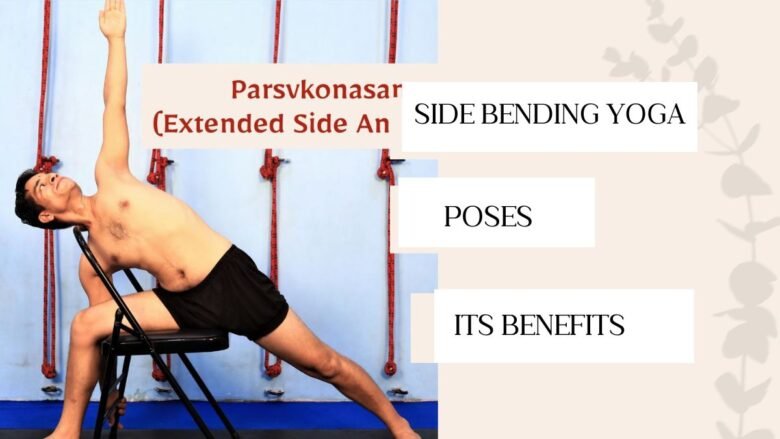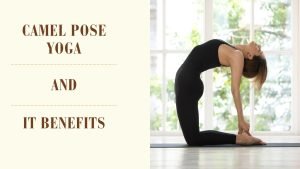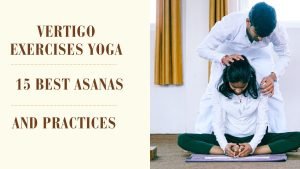Introduction to Side Bending Yoga Poses
Have you noticed stiffness in your spine or limitations in your flexibility? 🧘♂️ Side-Bending Yoga Poses might be just what you need. Flexibility and spinal health are critical components of a balanced yoga practice, helping you achieve a more limber body and a more centered mind. 🌟 This Aatm Yogashala blog post will guide you through the benefits and techniques of Side-Bending Yoga Poses, especially designed for beginners.🧘♀️
Why side bending Bending Poses?
Side bending Bending Poses poses are essential for maintaining the flexibility and health of your spine. These movements stretch and strengthen the muscles along the sides of your torso, enhancing your overall range of motion. Additionally, they can help alleviate back pain, improve posture, and promote digestive health.
Top 5 Side Bending Yoga Poses for Beginners
1. Standing Side Stretch (Tiryaka Tadasana)
Instructions:
- Stand with your feet together.
- Inhale and raise both arms overhead, interlocking your fingers and stretching upwards.
- Exhale and gently bend to the right, keeping your arms straight and your legs engaged.
- Hold for a few breaths, then return to the center and repeat on the left side.
Tips:
- Keep your shoulders relaxed, away from your ears.
- Engage your core to support your spine.
Modifications:
- If you have limited flexibility, keep your hands on your hips or place them on a support like a wall.
2. Gate Pose (Parighasana)
Instructions:
- Kneel on the floor and extend your right leg out to the side, foot flat on the ground.
- Inhale and lift your arms to shoulder height.
- Exhale and reach your right hand towards your right leg while stretching your left arm over your head.
- Hold for a few breaths, then switch sides.
Tips:
- Keep your chest open and facing forward.
- Avoid collapsing into your lower back.
Modifications:
- Use a block under your extended leg’s hand for additional support.
3. Extended Triangle Pose (Utthita Trikonasana)
Instructions:
- Stand with your feet wide apart, turn your right foot out 90 degrees, and your left foot slightly in.
- Extend your arms at shoulder height and reach forward with your right hand.
- Lower your right hand to your shin or a block, and lift your left arm towards the sky.
- Hold for a few breaths, then switch sides.
Tips:
- Keep your legs engaged and your torso long.
- Look up at your top hand if comfortable.
Modifications:
- Use a block under your lower hand to maintain proper alignment.
4. Half Moon Pose (Ardha Chandrasana)
Instructions:
- Begin in Triangle Pose, with your right foot forward.
- Bend your right knee and place your right hand on the ground or a block in front of your right foot.
- Lift your left leg parallel to the floor and extend your left arm towards the sky.
- Hold for a few breaths, then switch sides.
Tips:
- Keep your standing leg strong and your core engaged.
- Look at the ground for balance or up at your top hand for a challenge.
Modifications:
- Use a block under your lower hand for stability.
5. Revolved Side Angle Pose (Parivrtta Parsvakonasana)
Instructions:
- Start in a lunge with your right foot forward.
- Place your left hand on the ground or a block inside your right foot.
- Extend your right arm towards the sky, twisting your torso to the right.
- Hold for a few breaths, then switch sides.
Tips:
- Keep your back leg strong and your hips level.
- Avoid collapsing into your lower back.
Modifications:
- Use a block under your lower hand for support.
What are the Benefits of Side bending Yoga Poses?
Side bends offer a multitude of benefits that extend beyond increased flexibility. Here are some of the key advantages:
- Enhanced Spinal Mobility: Regular practice of Side bending Yoga Poses can significantly improve the flexibility and mobility of the spine, allowing for greater ease of movement in daily activities.
- Improved Posture: These poses strengthen the muscles along the sides of your torso, promoting better alignment and posture.
- Pain Relief: Side bends can alleviate tension and pain in the lower back, neck, and shoulders by stretching and strengthening the muscles in those areas.
- Digestive Health: By massaging the abdominal organs and improving circulation, side bends can aid digestion and promote overall digestive health.
- Balance and Stability: Practicing side bends enhances your sense of balance and stability, which can prevent falls and improve performance in other physical activities.
- Stress Reduction: Like other yoga poses, side bends help in reducing stress and anxiety by encouraging deep breathing and mindfulness.
Incorporating Side bending Yoga Poses into your yoga practice can lead to numerous physical and mental health benefits, making them a valuable addition to any fitness routine.
The Physical and Mental Benefits of Side bending Yoga Poses
Physical Benefits
- Improved Flexibility:
Side bending Yoga Poses poses target the oblique muscles, increasing flexibility and range of motion in the torso.
- Spinal Health:
Regular practice helps maintain spinal alignment and can alleviate chronic back pain.
- Enhanced Posture:
Strengthening the muscles along the sides of your torso supports better posture.
Mental Benefits
- Calming and Centering:
These poses encourage deep breathing and mindfulness, helping to reduce stress and anxiety.
- Energy Boost:
Stretching and opening the sides of your body can invigorate your energy levels.
Also Read: Best 200 Hour Yoga TTC In Rishikesh
Side Bending Yoga for Specific Health Concerns
Back Pain
Side bending Yoga Poses can relieve tension in the back muscles, providing relief from chronic pain.
Digestive Issues
These poses can stimulate the digestive organs, promoting better digestion and alleviating discomfort.
Respiratory Problems
Side bending opens the chest and expands the ribcage, improving lung capacity and breath control.
Testimonials
“Since incorporating side bending poses into my routine, my back pain has significantly decreased,” says Jane, Aatm Yogashal Student.
Incorporating Side bending Yoga Poses into Your Practice
Daily Routine
- Beginner Sequence:
- Standing Side Stretch
- Gate Pose
- Extended Triangle Pose
- Advanced Sequence:
- Half Moon Pose
- Revolved Side Angle Pose
- Extended Triangle Pose
Tips for Practicing
- Balance:
Ensure you balance your practice with forward bends, backbends, and twists.
- Listen to Your Body:
Pay attention to how your body feels and avoid pushing beyond your limits.
Conclusion for Side bending Yoga Poses
Incorporating side bending yoga poses into your practice can deliver a multitude of physical and mental benefits, making them an excellent addition for yogis of all levels. From improving flexibility and spinal health to promoting better posture and breathing, these poses serve as crucial components of a well-rounded yoga routine. Whether you are seeking relief from chronic back pain, looking to boost your energy levels, or aiming to find a sense of calm and balance, side bending poses offer a holistic approach to enhancing your well-being. Remember to listen to your body, take modifications as needed, and enjoy the journey of exploring these transformative positions.
Frequently Asked Questions for Side bending Yoga Poses
1. Can anyone practice side bending yoga poses?
Yes, side bending yoga poses can be practiced by people of all levels, from beginners to advanced yogis. It’s important to listen to your body and make modifications as needed to avoid injury.
2. How often should I incorporate side bending poses into my practice?
It’s beneficial to incorporate side bending poses into your practice at least 2-3 times a week. However, you can adjust this frequency based on your individual needs and fitness goals.
3. What should I do if I feel discomfort while practicing these poses?
If you feel discomfort while practicing side bending poses, don’t push through the pain. It’s essential to listen to your body. Consider using props like blocks or taking modifications to make the poses more accessible. If discomfort persists, consult with a yoga instructor or healthcare professional.
4. Can side bending poses help with weight loss?
While side bending poses alone are unlikely to result in significant weight loss, they can be a part of a comprehensive yoga practice that supports overall fitness and well-being. These poses help in building muscular strength and flexibility, which can contribute to a healthier and more active lifestyle.
5. Are there any precautions I should take before practicing side bending poses?
Before practicing side bending poses, make sure to warm up properly to prepare your muscles. If you have any pre-existing medical conditions or injuries, consult with a healthcare provider or a qualified yoga instructor to ensure these poses are suitable for you. Always work within your range of motion and avoid overstretching.




